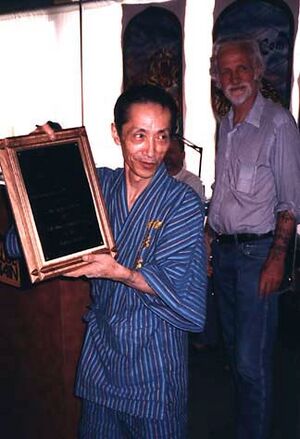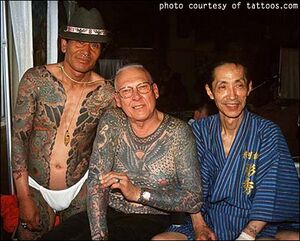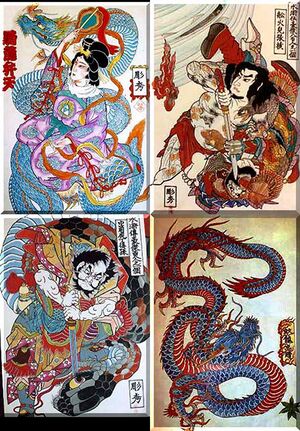Hori hide: Difference between revisions
Jump to navigation
Jump to search
(Created page with "<html><div class="mw-content-ltr" dir="ltr" id="mw-content-text" lang="en"><p><b>Kazuo Oguri</b> (or <b>Horihide</b>) is largely credited as being the first Japanese <a class="mw-redirect" href="/index.php?title=Tattoo_artist" title="Tattoo artist">tattoo artist</a> after World War Two to travel to the United States. In <a href="/index.php?title=1970" title="1970">1970</a>, he traveled to Hawaii to meet <a href="/index.php?title=Sailor_Jerry_Collins" title="Sailor Jerry...") |
(Page conversion via llm-mediawiki-rev -jwm) |
||
| Line 1: | Line 1: | ||
'''Kazuo Oguri''' (or '''Horihide''') is largely credited as being the first Japanese [[Tattoo artist|tattoo artist]] after World War Two to travel to the United States. In [[1970]], he traveled to Hawaii to meet [[Sailor Jerry Collins]] and share the art and history of [[Tebori]], re-introducing traditional Japanese tattooing to Western culture. As a founder of the [[Japanese Tattoo Institute (page does not exist)|Japanese Tattoo Institute]] and the [[Tokai Tattoo Club (page does not exist)|Tokai Tattoo Club]], his contributions to the advancement of tattooing are recognized worldwide by the most respected artists. | |||
{| class="wikitable" style="text-align: center;" | |||
|- | |||
| [[File:KazuoNIX.jpg|thumb|Kazuo Oguri receives a lifetime achievement award from [[Steve Gilbert (page does not exist)|Steve Gilbert]] at the first [[Northern Ink Xposure (page does not exist)|Northern Ink Xposure]] in 1998.]] | |||
| [[File:KazuoGroup.jpg|thumb|From left to right: Mr. Hassan, [[Lyle Tuttle]], and Kazuo Oguri. Taken in 1998.]] | |||
| [[File:KazuoArt.jpg|thumb|Art by Kazuo Oguri.]] | |||
|} | |||
== Related Articles == | |||
* [[Japan]] | |||
== External Links == | |||
* [http://tattoos.com/oguri/oguribio.htm My Life in Tattooing by Kazuo Oguri] | |||
Latest revision as of 05:11, 17 September 2023
Kazuo Oguri (or Horihide) is largely credited as being the first Japanese tattoo artist after World War Two to travel to the United States. In 1970, he traveled to Hawaii to meet Sailor Jerry Collins and share the art and history of Tebori, re-introducing traditional Japanese tattooing to Western culture. As a founder of the Japanese Tattoo Institute and the Tokai Tattoo Club, his contributions to the advancement of tattooing are recognized worldwide by the most respected artists.
 Kazuo Oguri receives a lifetime achievement award from Steve Gilbert at the first Northern Ink Xposure in 1998. |
 From left to right: Mr. Hassan, Lyle Tuttle, and Kazuo Oguri. Taken in 1998. |
